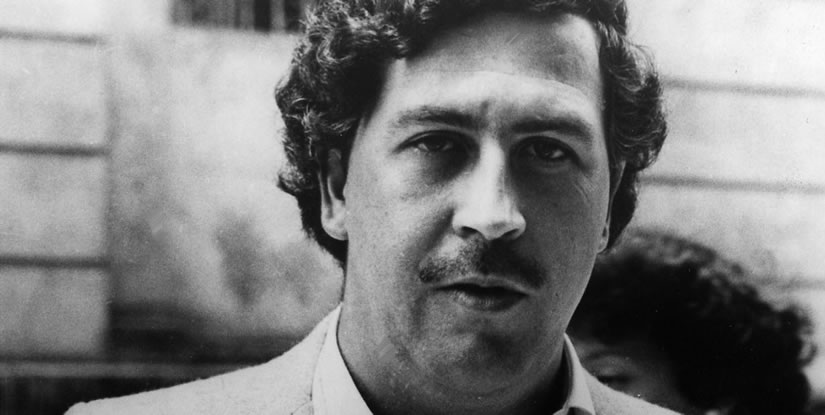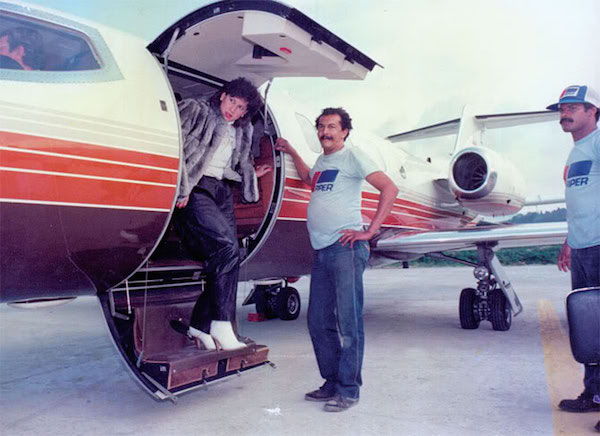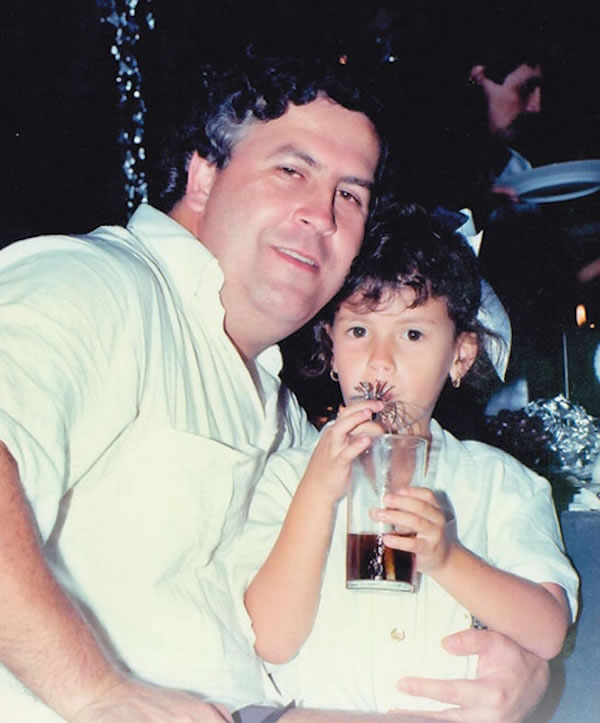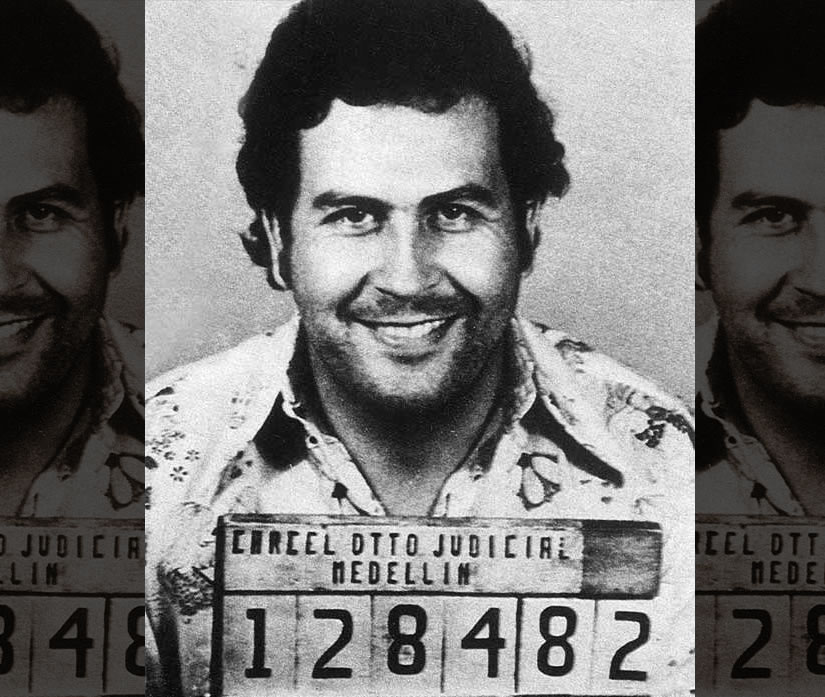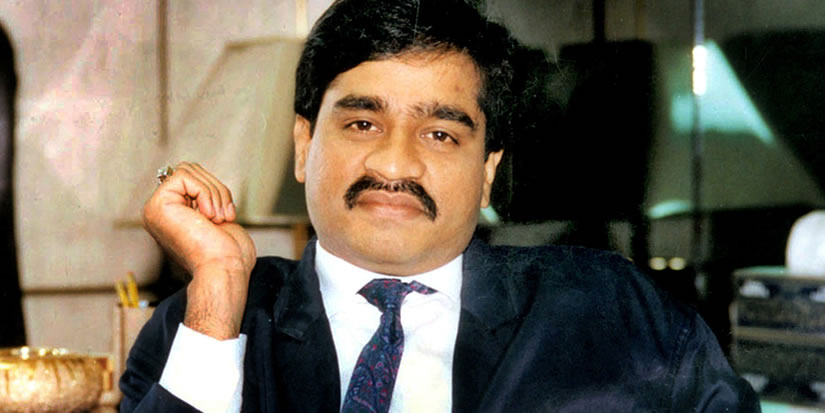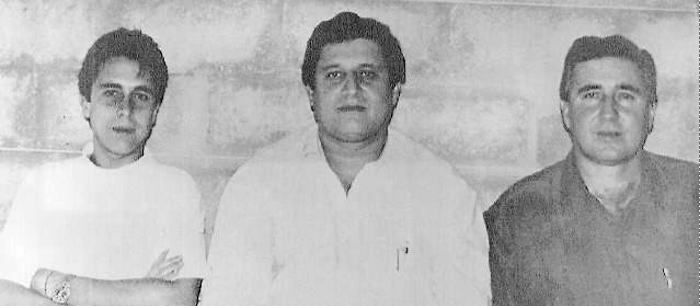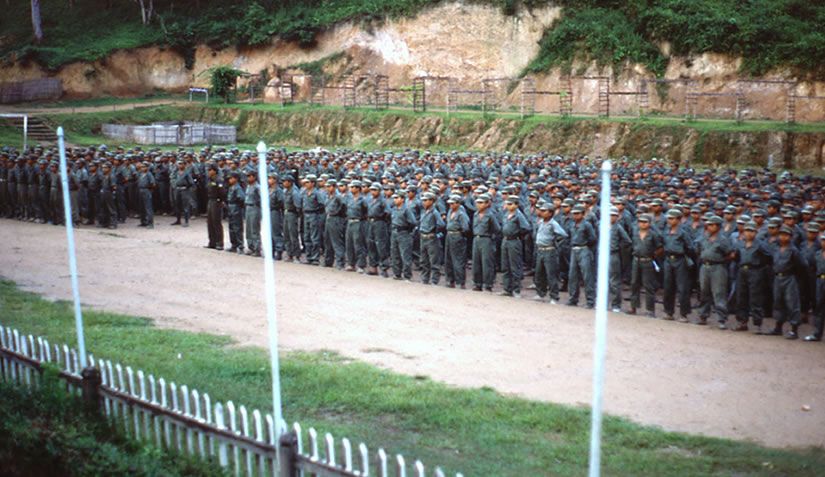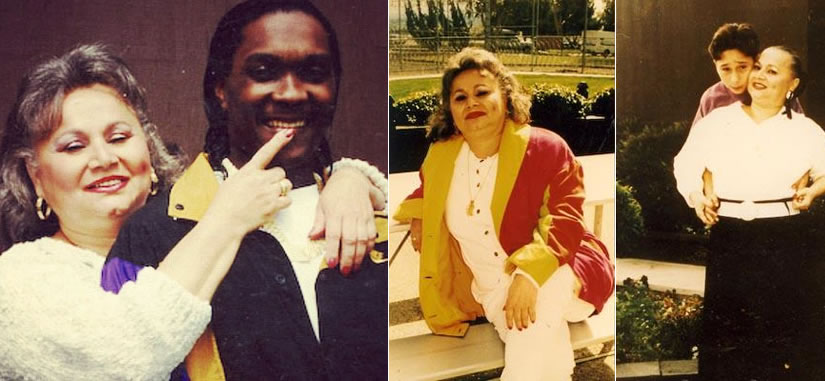Probably one of the fastest ways to become rich is to engage in some sort of illegal activities. Now, while we do not approve their actions, we cannot exclude some of the world’s richest criminals from our luxury encyclopedia. They managed to build financial empires for themselves, enjoying luxury lifestyle services, vacations, properties, and everything in between.
Drug trafficking was the major source of income for most of these characters, but some also engaged in illegal weapon sales and terrorism. What is remarkable is the fact that some of them even made it into the famous Forbes lists of ridiculously rich people. In most cases their illegal operations and criminal actions led these leaders to prison and sometimes even death, but until that point hey all basked in an abundance of privileges and pretty much everything that money can buy.
Pablo Escobar
Pablo Emilio Escobar Gaviria the notorious Colombian drug lord
Pablo Escobar, aka The King of Cocaine, was a ridiculously rich Colombian drug lord, who dealt only with cocaine. He remained famous for his impressive wealth, being considered the world’s richest criminal ever. In the early 1990s, his drug empire translated to a personal fortune of about $30 billion ($58 billion after inflation adjustment for 2014). In 1989, Escobar’s cartel controlled 80% of the global cocaine market, which brought him worldwide notoriety. He was even featured on the Forbes list of billionaires, which included 227 people at the time.
The Story of Pablo Escobar
I’d rather be in a grave in Colombia than in prison in the United States
I can replace things, but I could never replace my wife and kids
Pablo Escobar and his soon Sebastián Marroquín( born Pablo Emilio Escobar )
Pablo Escobar wife Maria Victoria Henao
Pablo Escobar and his daughter Manuela Escobar Henao
As a child he set himself a very high goal: he wanted to become rich quick, and he had the ambition of being a millionaire by age twenty-two. Pablo (his full name was Pablo Emilio Escobar Gaviria) began his career as a criminal in his teenage years by selling contraband cigarettes, stealing cars, running petty street scams, selling fake lottery tickets, and even stealing and then selling gravestones. His brother later claimed that the gravestones were not stolen, but taken away from those who hadn’t paid for the site.
There can only be one king.
Pablo Escobar after his arrest for trafficking in 1976
In modern business it is not the crook who is to be feared most, it is the honest man who doesn’t know what he is doing.
The first time he made a quick $100,000 was in his early twenties, when he kidnaped and received a ransom for an important executive in Medellin, his hometown. Soon afterwards he entered the alluring realm of drug dealing and worked his way up to become its undisputed ruler in the city. The 1980s represented the height of his trafficking career, and at that time he would spend $1,000 a week on rubber bands that were used to wrap the innumerable stacks of cash.
The money was deposited mainly in warehouses, which led to a significantly high annual loss of ten percent, caused by rats that would creep in and nibble at the bills. Even so, Escobar’s wealth was increasing constantly, allowing him to enjoy a fabulous luxury lifestyle, while dealing with the authorities in a very simple way: his approach was called “plata o plomo”, which literally meant “silver or lead”, alluding to the fact that the authorities had only two options – to accept hefty bribes, or to be shot.
Having a native talent for public relations, the drug lord also played the Robin Hood card by helping the poor in his city. He would sponsor children’s football teams, and even help build schools, hospitals and churches. The poor loved him and voluntarily helped conceal his illegal operations by not talking to the authorities or by helping as lookouts. When he was finally cornered and shot dead by the police in 1993 at age 44, over 25,000 people attended his funeral.
Colombian police and military forces storm the rooftop where drug lord Pablo Escobar was shot dead
Pablo Escobar Grave
A good Tv Series about “El Patrón” is Narcos – ( A chronicled look at the criminal exploits of Colombian drug lord Pablo Emilio Escobar Gaviria )
Amado Carrillo Fuentes
Amado Carrillo Fuentes
For most people the phrase Personal Business Jet evokes fabulous leather interiors, executive designs with advanced built-in technologies, and even lavish en-suite bedrooms. For Amado Carrillo Fuentes, jets had a much more practical purpose: they had to transport tons of drugs in absolute safety to wherever his clients were. Hence his Senor de Los Cielos (Lord of the Skies) nickname.
If I die, nobody killed me. The only person who can kill Amado Carrillo is Amado Carrillo
Amado was one of the wealthiest criminals in the world, as well as one of the most powerful drug lords of his time. He was born in 1956 in a family that had experience in the drug business, so learning the trade was not difficult for him. He began his trafficking career under the guidance of his uncle, Don Neto, who was the leader of the Guadalajara Cartel.
He soon became Mexico’s top cocaine distributor, delivering four times more cocaine in the US than any other drug lord in the world. For that he had a serious fleet of Boeing 727 aircrafts (27 of them!) which he acquired with laundered money. He of course also had a few very comfortable luxury private jets for himself, which he used a lot for fleeing the country in search of safe havens.
He knew how to become rich in the world of illegal businesses, and during his lifetime he managed to amass a $25 billion personal fortune. Even though the authorities hunted him ever since he had assassinated and replaced the leader of the Juarez Cartel in 1993, seizing him was quite a challenge, as Amado proved to be one of the most sophisticated, diplomatic, powerful and low-key cartel leaders in Mexico.
As the search for him intensified, he decided to dramatically change his appearance by undergoing both liposuction and plastic surgery. In July 1997 he was admitted to the Santa Monica Hospital in Mexico City for the massive procedure, but the nine-hour operation proved fatal to him. Amado died on the operating table either due to a malfunctioning ventilator or because of the medication he received for the surgery. Some conspiracy theories were obviously also launched, but never proved.
Dawood Ibrahim
Criminals and wrongdoers who are highly successful in their enterprises are usually rich people. The more significant the damage they make, the wealthier they seem to be. Indian organized crime leader Dawood Ibrahim is one such character, enjoying a luxury life by creating mayhem in his country and in other places around the globe. He is currently one of the world’s most wanted people, ranking high on Interpol’s list of priorities.
Dawood is the head of an organized crime group called D-Company, which is unlike regular mafia organizations, given that its criminal actions also involve terrorist attacks and liaisons with dangerous groups such as Al-Qaeda. Back in 1993 Dawood was tied to the devastating Mumbai bombings, which led the Indian authorities to put him at the top of the list of India’s most wanted criminals. In 2003 it was proven that the crime lord had helped Al-Qaeda conduct their terrorist plans by allowing them to use his private smuggling routes.
He then became an official “global terrorist”, who operated not only against his own country, but against other nations as well. The United Nations decided to try and seize all of his assets from around the world, while also forbidding financial entities from working with him and his organization. A travel ban was also imposed among UN members.
Even though he is a widely known enemy of the Indian government, involved in large-scale illegal trafficking of narcotics and weapons, his family continues to lead a fairly public life in India. One of his daughters was married in 2005 to the son of a famous former Pakistani cricketer, and six years later his other daughter became the wife of a Pakistani-American. Despite his obvious relations to Pakistan, he claims he is not currently living in the Islamic country.
The Ochoa Vasquez Brothers
The Ochoa Vasquez Brothers
The three Ochoa Vasquez brothers – Jorge Luis, Juan David and Fabio – played a major role in founding the vicious Medellin Cartel in late 1970s’ Colombia. Juan David Ochoa, who was the oldest of the three, passed away in 2013 due to a heart attack. Before that, he had gone to prison for five years, only to be released in 1996 after a sentence plea bargain with the state.
Jorge Luis Ochoa, the middle brother, also spent time in prison and was released the same year as his brother after a five-and-a-half year sentence. They both had agreed to turn themselves in after former Colombian president Cesar Gaviria Trujillo offered reduced prison time in the country for drug traffickers like themselves. After years of extradition threats, the deal seemed very reasonable for the drug lords.
The youngest brother, however, did not enjoy the same treatment: Fabio Ochoa was extradited to the United States in 2001 and later sentenced to 30 years in a U.S. federal prison, where he still is today. Even after his brothers were released from penitentiary, Fabio continued his highly lucrative trafficking business, sending out regular shipments of cocaine in collaboration with the Milenio Cartel from Mexico. Between 1997 and 1999 he led massive smuggling actions of approximately 30 tons of cocaine per month.
The three were born in an entrepreneurial family, which started business legally. They owned family restaurant and cattle breeding businesses in the beginning, but that changed in the 1970s, when they found there were other ways to become rich, one of them being trafficking narcotics.
At least for a good few years, their decision allowed them to enjoy lavish lifestyles, owning expensive cars and relaxing onboard expensive yachts. In 1987 Juan David was ranked among the world’s twenty wealthiest people by Forbes, with a fortune of $3 billion. That, however, did not make the Ochoa family completely immune to the justice system, as history shows.
Khun Sa (Chang Chi-fu)
Khun Sa (Chang Chi-fu) – the Opium King (Source wikipedia)
Arm lord and drug trafficker Khun Sa was one of the wealthiest and most dangerous men in Burma. Also known as the Opium King, he built himself an illegal empire by producing, selling and distributing narcotics. After becoming rich, he started to call himself “Khun Sa”, which means “Prince Prosperus”. His actual name was Chang Chi-fu.
His mother was Shan, but his father was Chinese, so as a young man he trained with the Chinese Nationalist Party known as the Kuomintang. After the Chinese Civil War, however, he fled the party, organized his own small army, and started collaborating with the Burmese government, who provided his men with weapons, uniforms and money in return for fighting against the Shan rebels.
The army kept growing in numbers, so the leader decided to cease the collaboration and shift his focus towards the production of opium. His narcotics operations soon landed him to prison, where he spent four years, from 1969 to 1973. He was only set free because his second-in-command had kidnapped two Russian doctors and used them as leverage to obtain his leader’s freedom.
Shortly after his release, Khun Sa returned to his opium business and even started fighting the Burmese government for the autonomy of the Shan state. He continued to make smart alliances and gradually increase his power and success, eventually becoming one of the main leaders of the notorious Golden Triangle, one of the two main opium smuggling areas of Asia.
Khun Sa’s forces at Ner Mone Shan State 1990 (Source wikipedia)
By 1994, his operation had grown so much that it was providing 90% of the total heroin on the streets of New York. In the following years he offered to sell his entire crop of opium to both the Australian and the US governments, arguing that otherwise he would continue to sell it illegally as heroin. In 1996 he reportedly finally surrendered to the Burmese authorities to avoid being charged in the US.
Even though the US DEA had offered a $2 million reward for his arrest, the officials in Burma never imprisoned or extradited him. He lived in the country’s Rangoon area until his demise in 2007, at age 73. While the exact cause of death is unclear, it is known that he had suffered from a number of health issues, including high blood pressure, partial paralysis, and diabetes.
Khun Sa with Australian journalist Stephen Rice (Source wikipedia)
Jose Gonzalo Rodriguez Gacha
One of the main characters behind the notoriously dangerous Medellin Cartel in Colombia, Jose Gonzalo Rodriguez Gacha was also one of the richest criminals in the world. Forbes included his name in its 1988 list of world’s billionaires. While he did not become rich overnight, his involvement in illegal businesses led them there quite fast.
He was born in a small town to a poor family who did pig farming. He reportedly never continued his formal education beyond grade school, which was probably one of the reasons why he engaged into various criminal activities from a young age. He developed a reputation as a very dangerous young man when he became a hired killer for various groups. One of his most important early associations was with Veronica Rivera de Vargas, the first cocaine queen who had earned her status by murdering her competition.
In 1976 Rodriguez moved to Medellin, the place where he would eventually build his narcotics empire together with Pablo Escobar, the Ochoba family, and the rest of the Medellin Cartel leaders. Together they covered all the stages the cocaine business, from production to distribution and marketing. As he became increasingly better at his trade, the drug lord ventured into creating new trafficking routes into the US and Mexico. He was a great fan of the Mexican culture, which led people to call him El Mexicano (The Mexican).
Jose Gonzalo Rodriguez Gacha – EL MEXICANO
Rodriguez was also credited by his associates for being the first person to set up Tranquilandia – one of the most notorious and large jungle laboratories. Over two thousand people lived and worked there, producing, packaging and preparing cocaine for distribution. The success of his operations made the authorities increasingly anxious and determined to disrupt the cartel’s illegal activities. They eventually even agreed to extradite Colombian citizens, putting the all the narcotraffickers at the top of the list.
The government’s anti-drug actions led to an outright war between the justice system and the Medellin Cartel, who went so far as to create its own paramilitary organization. Hundreds of judges, politicians and even civilians were killed in a number of terrorist actions led by the cartel. Bombings and assassinations happened almost daily for several months in 1988.
Rodriguez was eventually coughed by the police in December 1989, when his son unsuspectingly led them to his father’s hiding place. The kingpin committed suicide by detonating a grenade, and a surprisingly large number of people came to his ensuing funeral: it was estimated that approximately 15,000 mourners gathered around the cemetery.
Gilberto and Miguel Rodriguez Orejuela
Gilberto Jose Rodriguez Orejuela together with his brother Miguel Angel Rodriguez Orejuela and Jose Santacruz Londono were the heads of the Cali Cartel which they founded in Colombia during the 1970s. They started building their drug trafficking empire with marijuana, but during the 1980s they branched out and included cocaine in the business.
The cartel soon became the main supplier of cocaine for both the US (an estimated 80%) and Europe (90%), which obviously translated to huge personal fortunes for the brothers. Unlike their rivals in the extremely violent Medellin Cartel, the leaders of the Cali Cartel were more inclined to avoid the legal consequences to their illegal actions by bribery and not assassinations.
Gilberto and Miguel Rodriguez Orejuela (Source)
That determined the authorities to keep pretty much all their attention on the rivaling drug lords in Medellin, who in turn responded with even more violence and also acts of terror. While the state was engaged in an outright war with the other crime bosses, the Rodriguez Orejuela brothers and their associates continued to focus their energies in laundering money and smuggling drugs across the borders, which resulted in a period of visible growth for their organization.
After the Medellin Cartel was dismantled by the authorities in the early 1990s, the police switched focus towards the traffickers in Cali. In 1995 both Gilberto and Miguel were captured and sentenced to prison. They started their prison life in Colombia, but several years later they were both extradited to the United States, where they were accused of both trafficking and money laundering, which resulted in 30-year sentences for each of them. They are currently detained in different federal institutions.
Carlos Enrique Lehder Rivas
Like most crime lords, Carlos Lehder began his illegal activities young. He was born into a mixed-nationality family (German father and Colombian mother) who operated a semi-legal used car business. He contributed to the family business by stealing American vehicles and bringing them home for sale. He also engaged in marijuana dealing on the side, but was eventually arrested and imprisoned in Danbury, Connecticut for car theft.
Carlos Lehder – Drug Dealer, Organized Crime(Source)
It was during his time in prison that he met his future business partner Geroge Jung, who had experience in smuggling marijuana using a small aircraft. Jung’s stories seemed fascinating to Lehder, who decided that once he would be released he would try to take advantage of the blooming cocaine market of the time. He invited Jung to join his plans and then kept learning everything he could about drug trafficking and money laundering from his fellow inmates.
After Lehder and Jung were released from prison, they used two American women to smuggle cocaine in their suitcases after a paid vacation in Antigua. After repeating this classic trafficking process for several times, they raised enough money to purchase a small plane and pay a professional pilot to help them fly large amounts of cocaine into the US via the Bahamas. The plane would always stay below radar and then land on dry lakebeds, which was an innovative way of trafficking narcotics at the time.
The business soon flourished and Lehder could afford to bribe enough Bahamas officials to make sure that he could continue his operations unhindered. He also gained increasing credibility among other drug lords, which opened new doors and opportunities for him. His success gradually turned him into a megalomaniac with a ridiculously luxurious lifestyle and even plans to own his very own Bahamian island with the purpose of setting his business headquarters there.
The island that he chose was Norman’s Cay, which at the time held only about 100 private properties. Lehder made sure every inhabitant felt threatened to the point where they would move away and leave the island to him. He also forced Jung out of the business and kept working with the Medellin Cartel to bring tons of cocaine into the US every year. Between 1978 and 1982 his island was the main drug smuggling hub in the Caribbean, and also a place where he and his associates could bask in luxury.
In 1984 Colombia announced that it would extradite its drug traffickers to the United States, which marked the beginning of the fall for Carlos Lehder and his associates. The government also froze all of his accounts, suddenly sending him into near bankruptcy. He was forced to retreat in the jungle, where he became very ill and had to be flown into Colombia by Escobar in order to receive medical attention. There he was later betrayed and handed over to the authorities, which in turn sent him into the US, where he is still imprisoned today.
Griselda Blanco
Griselda Blanco was a notoriously violent cocaine trafficker and an important figure in the Medellin Cartel. Also known as the Black Widow, the Cocaine Godmother, the Queen of Narco-Trafficking, La Madrina, or La Dama de la Mafia (The Lady of the Mafia), she had a pioneering role in the Miami cocaine trade during the 1970 and early 1980s.
Griselda Blanco – The Lady of the Mafia
Blanco and her mother moved from their home place in Cartagena, Colombia to Medellin when she was only three years old. With a reportedly abusive mother and living in a slum neighborhood with bad company, she quickly became involved in criminal activities. She was only eleven years old when she reportedly kidnapped and tried to ransom a child from an upscale neighborhood, but ended up shooting and killing the boy.
At age 14 she decided to run away from home, and later got engaged in prostitution. After years of pickpocketing and other petty crimes, she eventually started doing major hustles together with smuggler Carlos Trujillo, who later became her husband and the father of their three children. The relationship ended a few years later and it is believed that Griselda had him murdered after a drug-related argument.
In the mid-1970s she and her second husband moved to New York, where they established a flourishing cocaine operation which spanned across the entire United States. At the peak of her business she was making over $80 million per month, which allowed her to indulge in a highly luxurious lifestyle. Her inclination for violence, though, attracted a lot of attention from the authorities, who charged her and thirty subordinates of hers on federal drug conspiracy charges. This was the largest cocaine case in history at the time.
Griselda Blanco was a notoriously violent cocaine trafficker and an important figure in the Medellin Cartel
To avoid the US authorities, Blanco fled to Colombia only to return to Miami a few years later. The DEA finally arrested her in 1985 and she was condemned to over ten years of prison time. Later she was indicted of three murders, but due to some technicalities she had to be released and deported to Colombia in 2004. Having had an extremely violent business approach (even murdering her cocaine suppliers to avoid payment), she soon found herself surrounded by enemies who all wanted her dead. In 2012 she was murdered in a drive-by shooting in Medellin.
Al Capone
Al Capone, the infamous Italian leader of Chicago organized crime
Few criminals are as widely known as Al Capone, the infamous Italian leader of Chicago organized crime. Born into a family of immigrants, he was not the stereotypical poor foreign kid, but the son of a respectable family. Even though he did pretty well in school, he decided to quit formal education at age 14 after he hit a teacher in the face and got expelled for it. He took various jobs after that, but felt that he learned the most from Johnny Torrio, a gangster whom he saw as a mentor.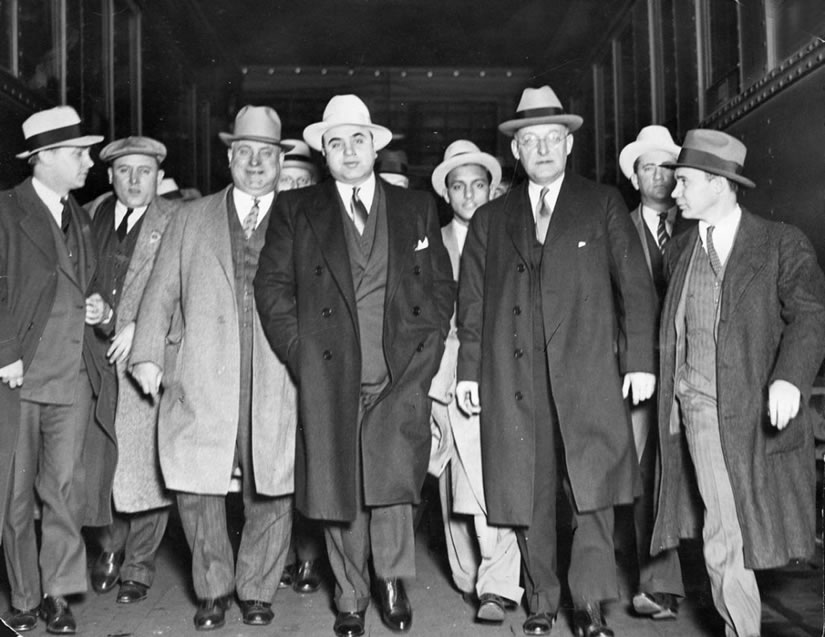
The legendary gangster Al Capone (Source)
Torrio taught him how to be a racketeer and yet keep an appearance of integrity, and Capone was quick to learn everything that the mafia business required. His famous “Scarface” nickname was given to him after he got into a fight with a young man in a club for unintentionally insulting his sister. The man slashed his left cheek with a knife, and Capone was stuck with a moniker that he loathed. His friends called him “Snorky”, which was slang for well-dressed and elegant.
Al ‘Scarface’ Capone, nickname he received because of the scar on his face, caused by a cutting knife
I don’t even know what street Canada is on.
At age 20 the young gangster was summoned to Chicago by Torrio and it is alleged that he also assassinated his mentor’s boss in order to help make him the new boss of the successful brothel where they were working. Torrio retired in 1925 after having shot several times in an assassination attempt and decided to leave Capone in charge of their operations. By this time they had already built a small mafia empire that revolved around bootlegging, gambling, prostitution and extortion. He was making around $100 million a year, and he didn’t mind drawing the media’s attention with his luxurious cars and expensive jewelry.
Al Capone’s bullet proof car (Source)
The Kursaal’s re-enactments of Al Capone’s shoot-outs
He became increasingly preoccupied with safety and protection, travelling everywhere with bodyguards, but never actually carrying a gun. He did that as a symbol of status and power. After his father’s unexpected demise, he altogether stopped trying to keep a respectable façade and lived a blatantly lawless lifestyle. He murdered at least four people himself, and had countless others killed by his subordinates. By paying off the city’s authorities, he also enjoyed plenty of protection from the justice system while conducting his immensely lucrative alcohol business in a time of prohibition.
Al Capone a celebrity. Ringside at Comiskey Park, sitting with state Rep Roland Libonati(Source)
The one act that made him lose much of his power and respect in the public eye and among officials was the infamous Saint Valentine’s Day Massacre. The event happened in 1929, when Capone was trying to eliminate his long-time rival Bugs Moran and his North Siders gang. The men were lured into a garage where they were told they would be sold whiskey, but then few of Al Capone’s people git dressed in fake police uniforms and pretended to raid the place. They lined the victims along a wall and executed them with machine guns. Seven men were killed in the massacre, and the event became national media news.
Al Capone’s police mug shot
May 1932, Al Capone was transferred to prison for tax evasion(Source)
Now I know why tigers eat their young.
While no one could directly link the assassinations to Capone, the police knew exactly who had been behind them. Actually, the mafia head never went to prison for any of his murders. It was only tax evasion that the authorities could eventually link him to, and so in 1931 he was sentenced to eleven years of prison time. By this time his health was increasingly poorer due to his syphilis complications. After he started to manifest dementia symptoms, the court reduced his sentence and released him. He died at home, surrounded by his family, after suffering a heart attack in 1947.
Al Capone’s death certificate
When I sell liquor, it’s called bootlegging; when my patrons serve it on Lake Shore Drive, it’s called hospitality.

